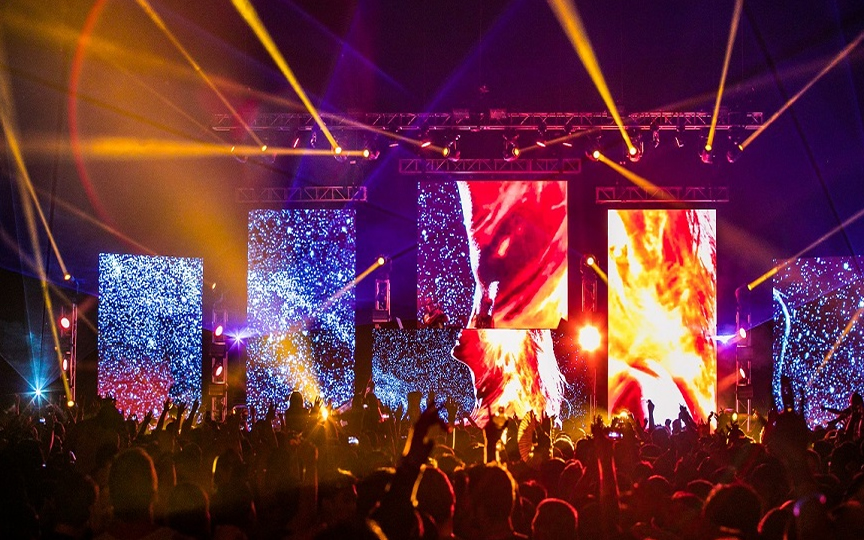Concerts and stage shows rely heavily on visual effects to create an unforgettable audience experience, and LED displays have become a central element in modern stage design. They can function as immersive backdrops, dynamic visualizers for live music, or even interactive elements synced with lighting and special effects. To maximize their impact, careful planning and correct setup are essential.

Choosing the Right LED Display Type
The choice between rental LED panels and fixed-installation displays depends on the event format. Rental panels are lightweight, quick to assemble, and easy to transport—perfect for touring artists and temporary venues. Fixed installations are ideal for venues with permanent stages, offering higher stability and longer service life.
Pixel Pitch Considerations
For concerts, pixel pitch directly affects how clear visuals appear to the audience. Smaller pixel pitches (P2.9–P4.8) are recommended for indoor stages where viewers are closer to the screen, while larger pitches (P5–P8) work for large outdoor venues where audiences are further away.
Brightness and Color Performance
Concert environments often have powerful stage lighting, which can wash out visuals if displays are not bright enough. Aim for at least 1,200–1,500 nits for indoor shows and 4,000–5,000+ nits for outdoor stages. Accurate color reproduction ensures that video content, branding, and lighting effects match the creative vision.
Creative Screen Configurations
LED displays are no longer limited to a flat rectangle. Modular panels allow for curved walls, angled screens, or even 3D-like structures. Designers often combine a large central backdrop with side wings or floor panels to create a multi-dimensional viewing experience.
Structural and Safety Considerations
Stage setups must comply with weight limits and safety regulations. Use professional truss systems and ensure the display is securely fixed to withstand vibrations from sound systems and movement from crew. Weatherproofing is essential for outdoor shows, with IP65-rated modules recommended.
Content and Control Systems
A professional video processor is key to syncing visuals with live performances. Media servers can handle multiple video sources, real-time effects, and precise timing with music and lighting cues. Ensure content resolution matches the display’s native resolution to avoid scaling artifacts.
Setup and On-Site Adjustments
Before the show, run a full display test to check brightness uniformity, color calibration, and synchronization with other stage elements. Have spare modules and power supplies ready for quick replacements in case of failure during the event.
LED displays have transformed concerts and stage shows into multi-sensory experiences, offering creative possibilities that were once impossible. With the right design, equipment choice, and setup process, they can elevate performances and captivate audiences from the first note to the last encore.
Topview Display provides high-quality LED display solutions designed for concerts, festivals, and live events. Contact us to discuss how we can make your stage vision a reality.

